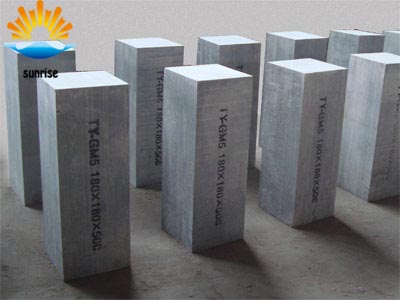Product
Fused Cast AZS Block
AZS Casting Type
AZS Ramming Materials
Fused Cast AZS TY-AZS41
Fused Cast AZS TY-AZS36
Fused Cast AZS TY-AZS33
Fused Cast Alumina Block
Fused cast Alumina Block TY-H
Fused cast Alumina Block TY-A
Fused cast Alumina Block TY-M
Fused Cast High Zirconia Block
Fused Cast Skid Rail Block
Silica brick
Magnesia Series Brick
Bonded Refractory Block
High alumina And Fire clay bricks
Insulation Series Brick
Ceramic Fiber Products
Contact Details
- 0086 371 63838939
- 0086 371 63835539
- sales@sunriserefr.com
- tkfanyi
- No.36 Fengchan Road, Zhengzhou City
Solutions
Specifications and Sizes of Refractory Bricks
- More related products
- Fused Cast AZS Block
- Fused Cast Alumina Block
- Fused Cast High Zirconia Block
- Fused Cast Skid Rail Block
Generally, the joints of refractory bricks are the weakest point of the masonry. Molten slags and corrosive gases can penetrate into the bricks through joints. If the specifications and sizes are not correct, the construction is not convenient and the joints are large. The volume of the masonry is not stable due to the shrinkage of the bricks, which may cause the spalling and cracking of bricks, and even collapsing of the masonry. This will expand the contact area between the slag and refractory brick, accelerate erosion, cause partial damages of the masonry and reduce the service life of the masonry. Therefore, in order to ensure the overall quality of the masonry, the specifications and sizes of refractory bricks should be correct.
The dimension tolerance of refractory bricks, distortion and edge missing are all important indicators of the quality of refractory bricks. Maximum limit values should be defined based on the classification and working conditions to judge the quality of refractory products and grade the products.
The accuracy of the specifications and sizes of refractory bricks is mainly controlled by the raw materials and processing as well as storage and transport. Stable raw materials, sophisticated equipment, reasonable production technology and proper operation all help obtain products with qualified specifications and dimensions. Proper storage, packing and transport are also important to avoid further damage of products.


Read more
Need more information? Drop us a line
For more information on any of our products please get in touch using the form below. One of our sales team will respond to your enquiry as soon as possible.
Copyright © 2014 Zhengzhou Sunrise Refractory Co., Ltd. Site Index Product IndexSitemap









